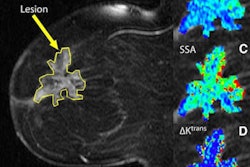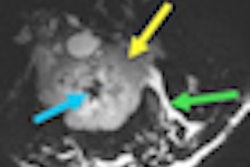Wednesday, November 30 | 11:50 a.m.-12:00 p.m. | SSK01-09 | Arie Crown Theater
In this Wednesday session, researchers will present their results on how digital breast tomosynthesis (DBT) better visualizes some mammographic lesions with nonspecific features on full-field digital mammography (FFDM).Dr. Asif Iqbal and colleagues from King's College Hospital evaluated 98 lesions from a cohort of 738 breast cases with both FFDM and DBT images, excluding microcalcifications but including masses of circumscribed and spiculate type, parenchymal distortion, and asymmetric density. Thirty-four of the 98 lesions were malignant and 64 were benign; of 26 lesions FFDM found to be normal, 18 were shown to be malignant at histology. All 47 lesions DBT scored as normal remained so at histology, Iqbal's group found.
DBT's sensitivity, specificity, and negative predictive value were 88.8%, 96.7%, and 93.7%, respectively, while FFDM's sensitivity, specificity, and negative predictive value were 31.4%, 61.3%, and 42.1%, respectively, leading the group to conclude that the additional diagnostic information DBT provides can influence the accuracy of mammography.




















